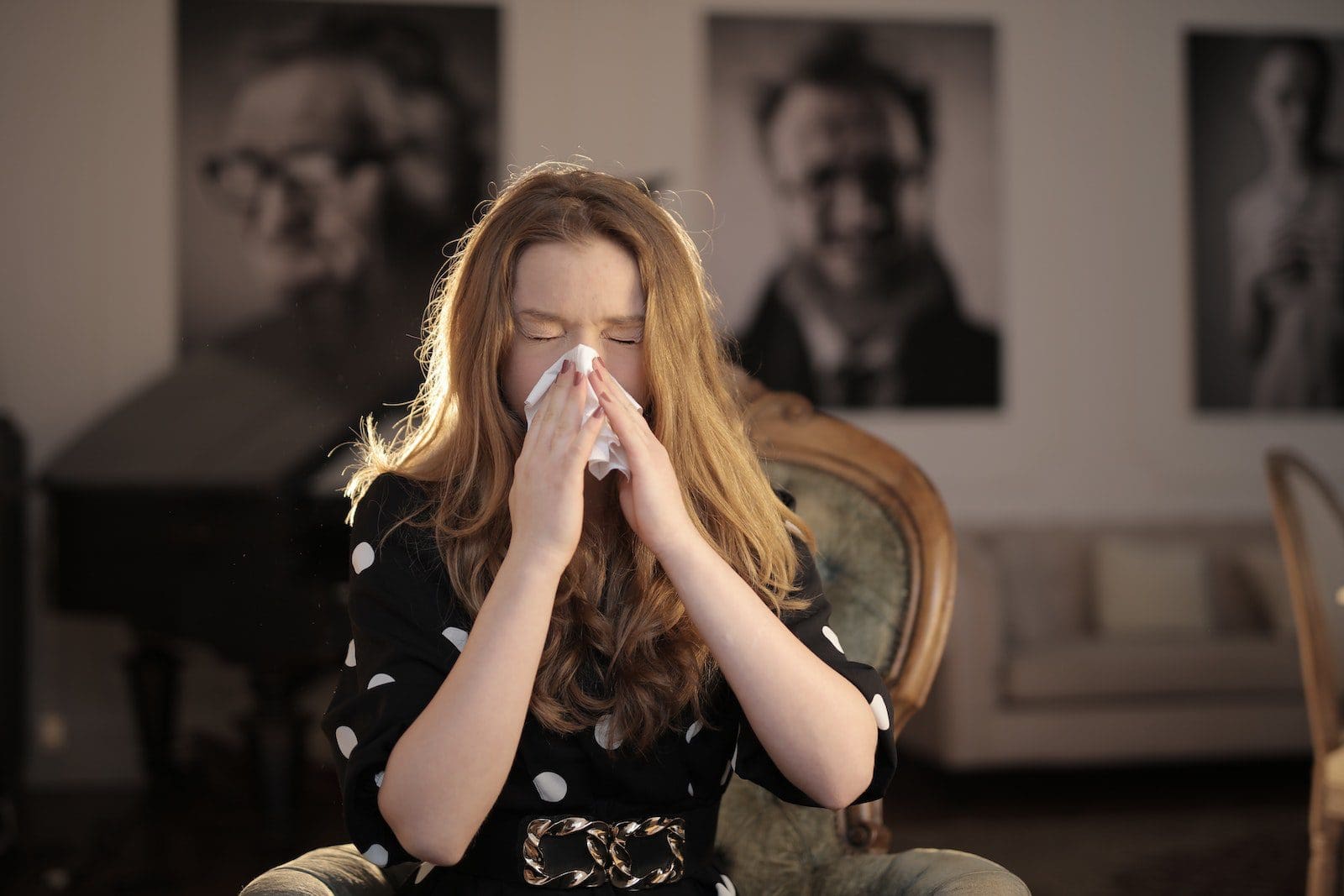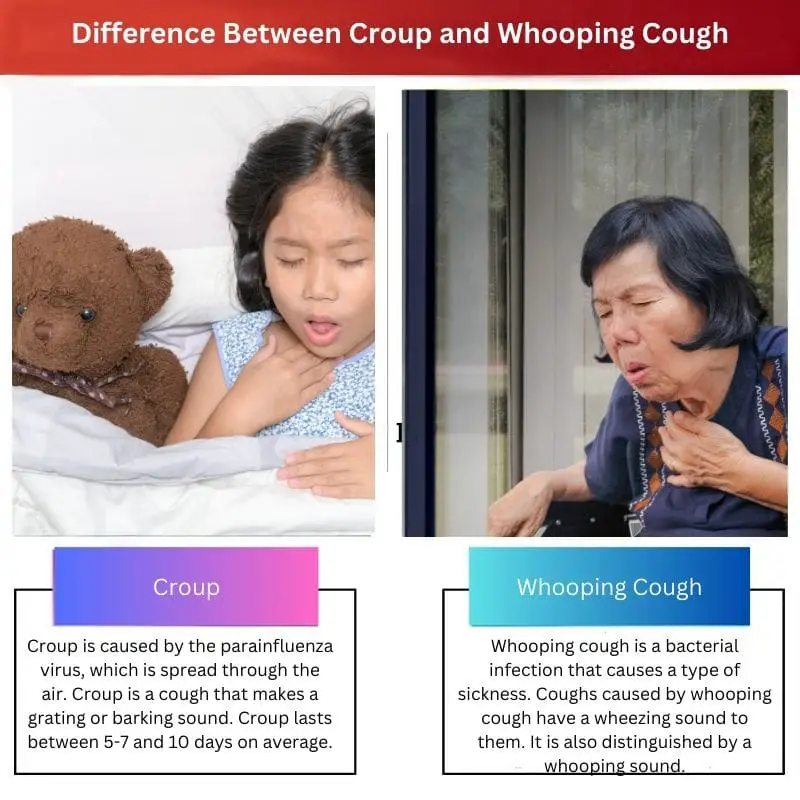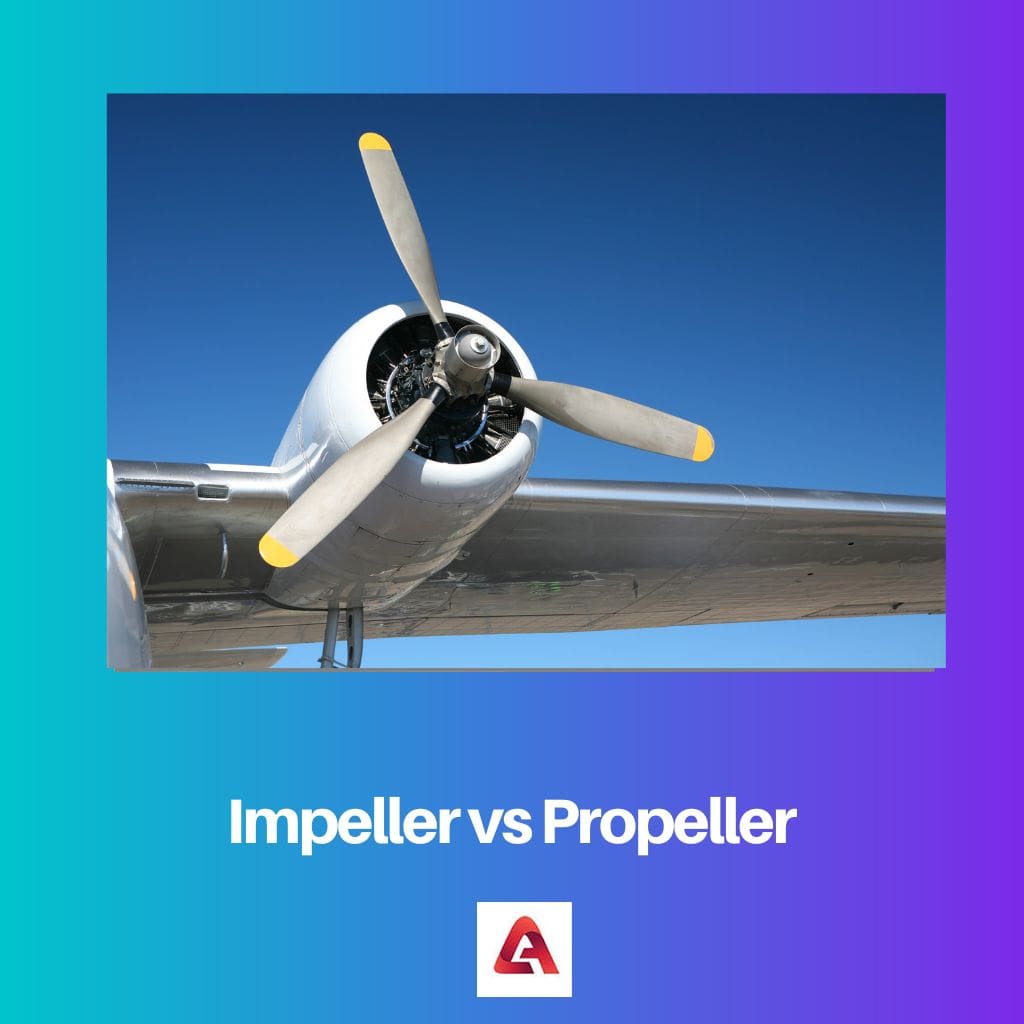Certain diseases are caused due to internal issues which occur inside the body. In contrast, other types of diseases occur due to foreign bodies suspended in the outer environment.
Microorganisms such as viruses, bacteria, and fungi play a greater role in causing simple kinds of cold coughs. However, it could be mild and sometimes fatal as well.
Key Takeaways
- Croup affects the larynx and trachea, causing a barking cough and difficulty breathing.
- Whooping cough, caused by the Bordetella pertussis bacterium, results in severe coughing fits and a “whooping” sound during inhalation.
- Doctors treat croup with steroids or inhaled medications, while antibiotics target whooping cough.
Croup vs Whooping Cough
The difference between Croup and Whooping Cough lies in the difference in the cause of the disease, treatment procedures, duration of the illness, symptoms they give, whether they are contagious or not, etc. Croup is a viral infection caused by the parainfluenza virus. However, on the contrary, Bacterial infections produce whooping cough, which is a form of sickness.

Croup is a sort of cough that makes a strong barking or grating sound. When a person is infected with Croup, they may experience difficulty breathing, a low-grade fever, inflammation and swelling in the windpipe, coughing, vocal cords, bronchi, hoarseness, and a barking cough.
Croup lasts between 5-7 days to 10 days on average. It isn’t contagious until a child has had a fever for three days.
Coughs from whooping cough have a wheezing sound to them. A whooping sound is also associated with it. Gagging, vomiting, breathing difficulties, mild coughing, blue lips, low-grade fever, severe coughing with a whooping sound, runny nose, and low-grade fever are all signs of whooping cough.
A person can be infected for up to 100 days with Whooping Cough. After starting antibiotics for five days, this can potentially be communicable.
Comparison Table
| Parameters of Comparison | Croup | Whooping Cough |
|---|---|---|
| Duration | 2 days-7 days | 70 days- 100 days |
| Sound of cough | Grating, harsh, barking sound. | Gasping, whooping sound. |
| Treatment | Nebulized epinephrine, dexamethasone | Antibiotics |
| Causes | The parainfluenza virus. | Infection caused by bacteria. |
| Symptoms | Inflammation and Swelling in windpipes, vocal cords, bronchi; hoarseness, fever. | Struggle in breathing, vomiting, runny rose, fever, blue lips. |
| Contagious | Up to 3 days/after the fever is cured. | Up to 14 days when infected, up to 5 days after being treated. |
| Outlook | Can be resolved at home. | Should be given treatment on time, else death may occur. |
What is Croup?
Croup is caused by the parainfluenza virus, which is spread through the air. Croup is a cough that makes a grating or barking sound. Croup lasts between 5-7 and 10 days on average.
Trouble breathing, low-grade fever, inflammation and swelling of the windpipe, coughing, vocal cords, bronchi, hoarseness, and barking cough are some of the symptoms that might appear when a person is infected with Croup.
However, It doesn’t become contagious until a child has a fever for three days. The use of nebulized epinephrine and dexamethasone in the treatment of Croup is common.
Croup can be treated at home without the use of drugs, which is how it happens. Because croup is only mild, it can be treated at home without the use of medications.

What is Whooping Cough?
Whooping cough is a bacterial infection that causes a type of sickness. Coughs caused by whooping cough have a wheezing sound to them. It is also distinguished by a whooping sound.
Gagging, vomiting, difficulty breathing, mild coughing, blue lips, low-grade temperature, severe coughing with a whooping sound, runny nose, and low-grade fever are all signs of whooping cough. A person can be infected with Whooping Cough for up to 100 days.
This can also be contagious after five days of antibiotic treatment. They can be contagious for up to two weeks if antibiotics are not used. Antibiotics are used in the treatment of Whooping Cough.
In the case of newborns, the repercussions of Whooping Cough might be serious. Seizures, pneumonia, brain damage, and even death are all possible complications if not treated promptly.

Main Differences Between Croup and Whooping Cough
- The disease known as Croup is caused by the parainfluenza virus. On the other hand, whooping cough is a type of disease which is caused by infections by bacteria.
- Croup is also a type of cough, which produces a harsh barking type sound or a grating sound. On the other hand, the sound of coughs produced by whooping cough is a gasping sound. It can also be characterized by a whooping sound.
- Some symptoms that can be seen when a person is infected with Croup are trouble breathing, fever of low-grade, inflammation and swelling in the windpipe, coughing, vocal cords, bronchi, hoarseness, and barking cough. On the other hand, whooping cough is characterized by the symptoms like gagging, vomiting, struggles in breathing, mild coughing, blue lips, and low-grade fever after 1 to 2 weeks- severe coughing with a whooping sound and runny nose.
- Croup occurs for a period of 5-7 days to 10 days. It’s not contagious until a kid runs a fever for around three days. On the other hand, Whooping Cough can even infect a person for up to 100 days. This can also be contagious after antibiotics are started for five days. And if the antibiotics are not taken, they can be contagious for up to two weeks.
- The treatment of Croup involves the intake of nebulized epinephrine and dexamethasone. On the other hand, the treatment of Whooping Cough is done with the help of antibiotics.
- Croup can also be cured at home even without the intake of medications, as it occurs in a mild state only. On the other hand, the consequences of Whooping Cough can be severe in the case of infants. The possible complexities involve seizure, pneumonia, brain damage and even death if not treated at the correct time.






